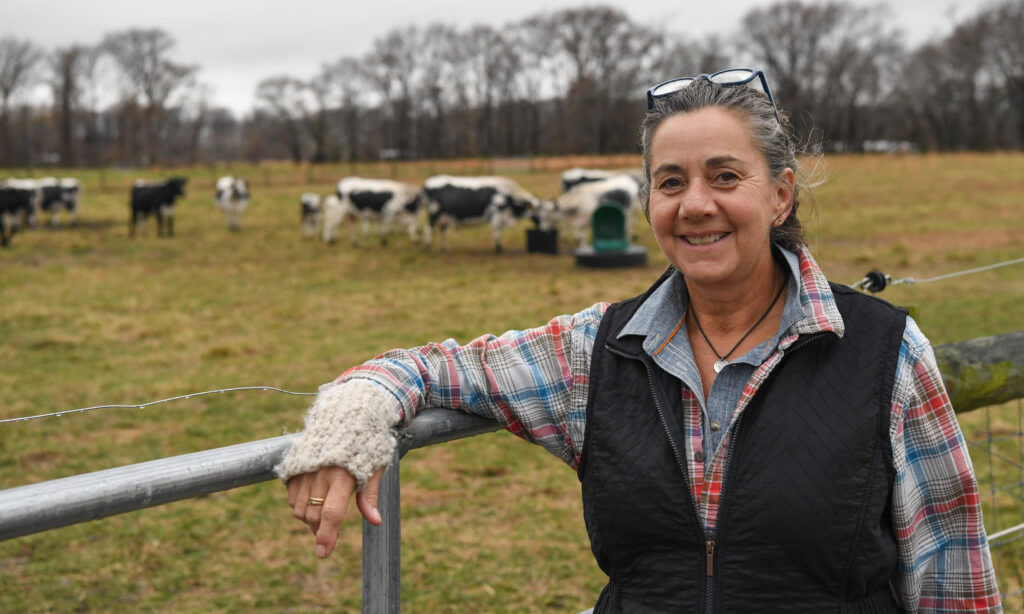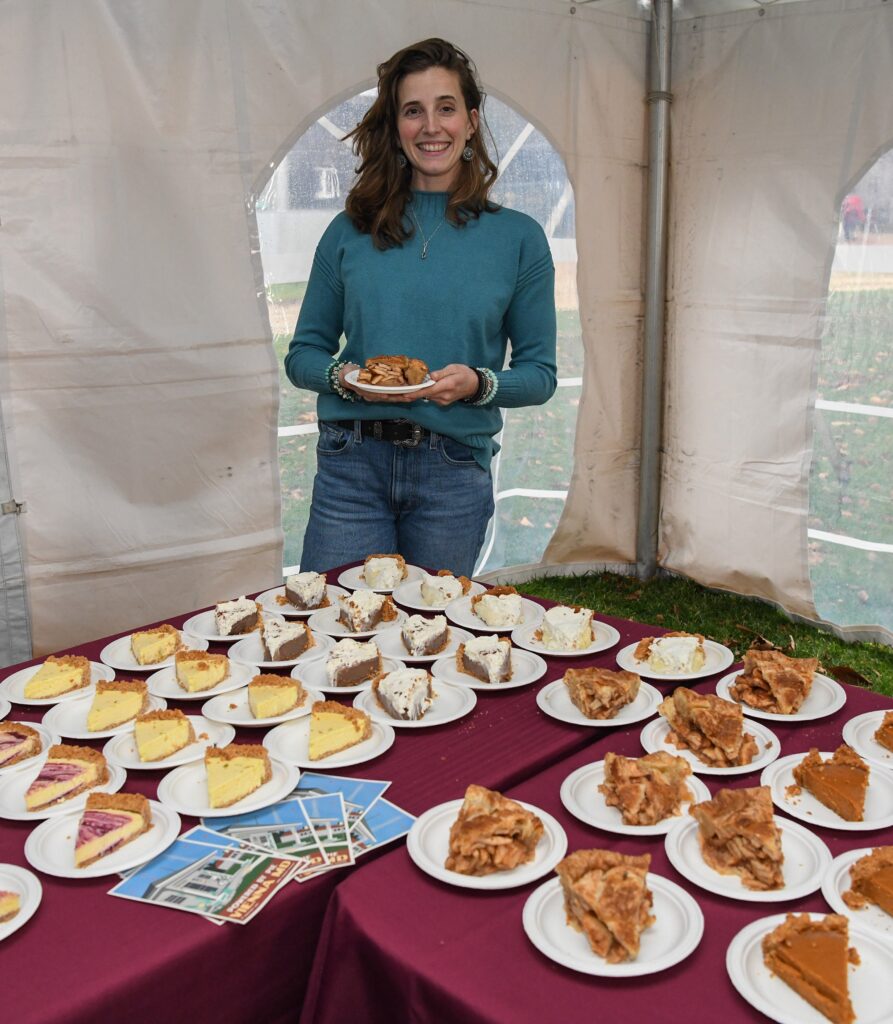
Whether their agribusiness ventures are on-farm markets, U-picks, CSAs, creameries, farm breweries, pumpkin patches with corn mazes and hay rides or overnight stays, a common theme emerged among small farmers attending a University of Maryland Eastern Shore-sponsored agritourism conference. The buzz was how to keep farms profitable in the face of challenging economic times by incorporating value-added products and experiences on the farm while navigating the financial and regulatory hurdles.

Dana Zucker (at right), who opened a farm-style bed-and-breakfast, Sugar Water Manor, on the banks of the Manokin River in Somerset County, Maryland, was there from several perspectives — as an agritourism operator, a presenter sharing her experiences and serving as a peer model and as a community agricultural educator.
Zucker, whose background is routed in agriculture in Kansas and tourism in Iceland, found herself on Maryland’s Eastern Shore two years ago. Her goal is “connecting people to their food and farms”—something that is “more embedded in other cultures” around the world, she said. Zucker offers visitors to her historic (1803) 68-acre farm, authentic stays in the homestead, farmhouse or loft above the apiary.
“It’s amazing to see families out in the field gathering free range eggs, organic vegetables for their dinner or visiting the goats and ducks,” Zucker said. “There is a need to educate consumers about agriculture, the land and the environment.”
For as much as she is committed to her farming lifestyle and agritourism business, she, like those in attendance at the conference, feel that some of the rules and regulations need to be evaluated and made to be clearer and easier to follow. Zucker is advocating for a network of small farmers involved in agritourism, targeted extension services and expanded help from tourism offices.
“It’s important to have partnerships and things already in place to help each other with the business side of farming,” Zucker said. “The cost of taking the farmer off the physical work of the farm to address these issues is real.”
UMES hosted the inaugural Maryland Agritourism Conference from Dec. 10-12 as a forum for small farmers across the state to network with peers and engage with representatives from the U.S. Department of Agriculture, Maryland Department of Agriculture, county tourism and economic development offices, and those serving as models in other states. It was fueled by an agritourism research project and subsequent publication
“Our goal was to put together an agenda for discussion and identification of issues that at the end of the day will shed light on steps necessary in moving the agritourism industry forward in Maryland,” said Dr. Moses T. Kairo, dean of UMES’ School of Agricultural and Natural Sciences and administrator for UMES Extension. “That MDA Secretary Kevin Atticks has joined us is a sign of how important an initiative such as this is.”
Atticks, who gave the keynote address at the opening session, pointed out that the state agency is celebrating its 50th anniversary this year.
“It’s time to think differently,” he said. “The top goal is to make farming more viable—growing, producing and selling. That’s what we are judging all new agricultural programs by.”
Half of Maryland is in agriculture production or preservation. An amazing fact, Atticks said, considering these areas are “sandwiched” between major metropolitan areas. Every farm in Maryland is within two and a half hours of a two-three metropolitan areas, which presents challenges and opportunities. Among the challenges is the disconnection and invisibility to farming by those who don’t live on a farm, along with the “incredible development pressure on our lands.” Opportunities exist as the highest disposable incomes are in these areas. “They eat, they enjoy experiences and they want to support local.”
Agritourism, he said, is agriculture “first and foremost.” It is part of value-added agriculture— taking something you are growing and adding value. Agritourism is also tourism with the goal of bringing people to your agricultural farm or business. Visitors, he said, spent $19.2 billion in 2022. It adds to the available attractions that can be marketed for a region. Agritourism is experience. “They want it, you’ve got it, so charge them for it.” Agritourism is education. For many, it’s a first touch of agriculture to learn where food comes from and for youth to consider it as a career.

His message that resonated the most with the small farmers in the audience: We have to “keep farms farming” by building on the support mechanism to develop agritourism and overcome regulatory hurdles. We need to change rules and processes to make it easier to “make it here.”

Nearly 200 people attended the inaugural event held at the Hyatt Regency Chesapeake Bay Golf Resort, Spa and Marina in Cambridge, Maryland. A pre-conference small farm bus tour took a select number of participants to Pop’s Old Place, (Darlene Goehringer, at left) a Century Farm in Dorchester County, Maryland, focusing on grass-fed heritage livestock breeds, an on-farm market and small-scale tours and events. Guests were also treated to pie from Mandala Pies (Caitlin LaComb, at right) in Vienna and Berlin, Maryland, made with locally sourced ingredients. The conference is part of a broader initiative to strengthen the collaboration between government agencies, academic institutions and the agricultural community.
Gail Stephens, Ag Communications, University of Maryland Eastern Shore, School of Agricultural and Natural Sciences, UMES Extension, gcstephens@umes.edu.
Photo by Todd Dudek, Ag Communications, University of Maryland Eastern Shore, School of Agricultural and Natural Sciences, UMES Extension, tdudek@umes.edu.

